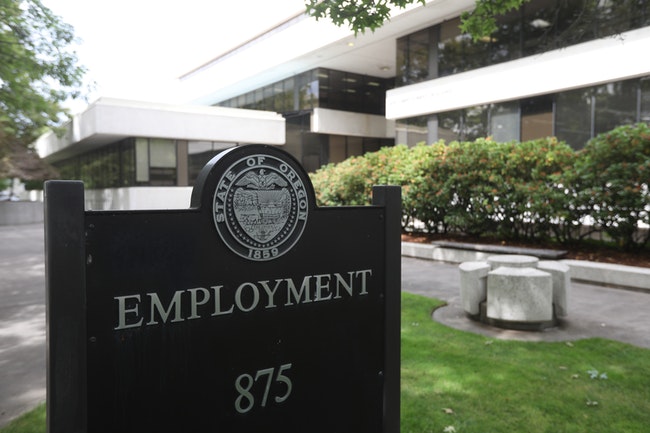
The Salem area added 1,600 jobs in June, many more than is normal for this time of year, and total employment is nearly 180,000. That is 10,000 more than one year ago. The unemployment rate dropped to 5.5%. One year ago it was 8.9%.
The economy is on the road to recovery.
The recovery is an uneven one, however.
Throughout the pandemic, it became clear that workers earning low wages were experiencing most of the job loss. Two new studies, one from the Oregon Employment Department and one from the Federal Reserve Board, present more evidence that low-wage workers suffered the most from job loss and financial hardship over the last year and a half.
Oregon Employment Department economists recently analyzed wage records of Oregonians unemployed in the second quarter of 2020. They then compared these wage records to those of workers laid off in the same time period of 2019.
It was no surprise that job loss was much higher in 2020 than in 2019, and that many low-wage workers had lost jobs. However, the share of low-wage workers losing jobs had increased by 8.6 percentage points from the year before, and the share of high- wage workers losing jobs increased by only 2 percentage points. That was unusual.
 Jobs lost during the second quarter of 2020 by industry and wages (Oregon Employment Department data)
Jobs lost during the second quarter of 2020 by industry and wages (Oregon Employment Department data)
At the beginning of the pandemic, layoffs were concentrated in industries that relied on high public contact.
For example, the leisure and hospitality industry lost half its employment in one month. What the Employment Department analysis showed clearly for the first time was that as layoffs eventually spread to all industries, job loss was still concentrated among low-wage workers and in proportions extremely skewed (see table).
For example, in the relatively well-paying financial activities industry (banks, insurance companies, real estate, etc.), nearly 19% of those earning low wages lost jobs, as opposed to only 6% of those making higher wages. A possible scenario is that lower-paid assistants in the industry who worked face-to-face with the public were laid off, while higher wage professionals continued to work.
The industry outlier is leisure and hospitality, where equal percentages of both low- wage and high-wage workers were laid off, 35%.
Because the industry was the hardest hit in terms of job losses, even some of the higher-wage employees lost jobs. But there are only a comparative handful of high- wage jobs in the industry – most of those working in the industry get low wages.
For an idea of the proportion of low and high wage workers in the leisure and hospitality industry, consider this. In the Salem area in the third quarter of 2020, out of a total leisure and hospitality workforce of approximately 16,000 workers, 10,000 workers made less than $15 an hour. Only about 600 workers made $30 an hour or more.
The Employment Department analysis can’t be replicated for the Salem Metropolitan Statistical area, which is Marion and Polk counties combined. The information for the analysis comes from employers reporting earnings and hours of their workers – this becomes the basis for the unemployment system. Many employers do business in more than one county but report earnings and hours as a total, and not by county. So, county-level information isn’t complete enough to be accurate.
The overall conclusion of the analysis, however, that larger percentages of low-wage workers in all industries lost their jobs than higher-paid workers, no doubt applies to the Salem area economy as well. To read the entire report, see article.
Complimenting the Employment Department analysis is a recent report from the Federal Reserve Board – the federal reserve is the central banking system of the U.S. Each fall since 2013, Federal Reserve economists have done a survey across the U.S. about financial challenges facing families and households.
The May 2021 report describes results from the fourth quarter of 2020.
Not surprisingly, the overall conclusion is that 25% of households said they were worse off financially in 2020 than a year before. This was an increase of 11 percentage points from the year before.
Survey results were extremely uneven across household circumstances, however.
The most dramatic difference was between those with a bachelor’s degreeand those with less than a high school education. Eighty-nine percent of those with at least a bachelor’s reported doing well, and only 45% of those with less than high school, compared to a year before. Those workers with high school or less tend to earn low wages.
The gap between those doing better and those doing worse, by educational levels, has existed since the beginning of the survey. But what was distinctive about 2020 results was that the gap between them had increased over 2019 by ten percentage points.
Both studies demonstrate that low-wage workers struggled before the pandemic hit, and that the pandemic and related business shutdowns made the situation worse. Much of the government assistance has expired or is about to.
Four different types of unemployment insurance will end the week of Sept. 5. Oregon’s eviction moratorium, set to end in June, was given an extension of two more months by the Oregon Legislature.
Even though job gains and declining unemployment point to a recovering economy, the recovery will continue to be uneven if all the assistance is allowed to expire and nothing else takes its place.
Pam Ferrara of the Willamette Workforce Partnership continues a regular column examining local economic issues. She may be contacted at [email protected].
JUST THE FACTS, FOR SALEM – We report on your community with care and depth, fairness and accuracy. Get local news that matters to you. Subscribe to Salem Reporter starting at $5 a month. Click I want to subscribe!









